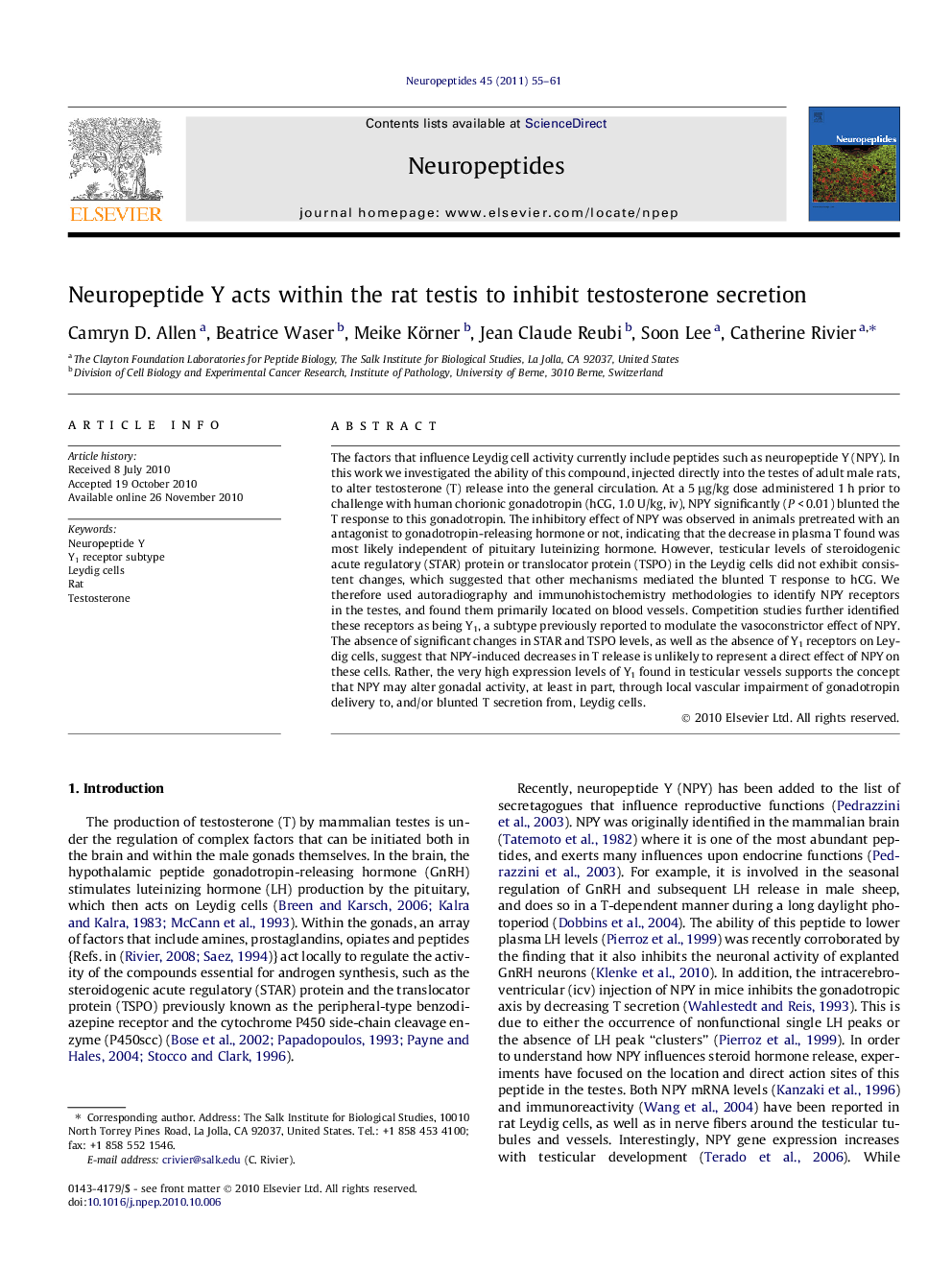| Article ID | Journal | Published Year | Pages | File Type |
|---|---|---|---|---|
| 2808495 | Neuropeptides | 2011 | 7 Pages |
The factors that influence Leydig cell activity currently include peptides such as neuropeptide Y (NPY). In this work we investigated the ability of this compound, injected directly into the testes of adult male rats, to alter testosterone (T) release into the general circulation. At a 5 μg/kg dose administered 1 h prior to challenge with human chorionic gonadotropin (hCG, 1.0 U/kg, iv), NPY significantly (P < 0.01) blunted the T response to this gonadotropin. The inhibitory effect of NPY was observed in animals pretreated with an antagonist to gonadotropin-releasing hormone or not, indicating that the decrease in plasma T found was most likely independent of pituitary luteinizing hormone. However, testicular levels of steroidogenic acute regulatory (STAR) protein or translocator protein (TSPO) in the Leydig cells did not exhibit consistent changes, which suggested that other mechanisms mediated the blunted T response to hCG. We therefore used autoradiography and immunohistochemistry methodologies to identify NPY receptors in the testes, and found them primarily located on blood vessels. Competition studies further identified these receptors as being Y1, a subtype previously reported to modulate the vasoconstrictor effect of NPY. The absence of significant changes in STAR and TSPO levels, as well as the absence of Y1 receptors on Leydig cells, suggest that NPY-induced decreases in T release is unlikely to represent a direct effect of NPY on these cells. Rather, the very high expression levels of Y1 found in testicular vessels supports the concept that NPY may alter gonadal activity, at least in part, through local vascular impairment of gonadotropin delivery to, and/or blunted T secretion from, Leydig cells.
